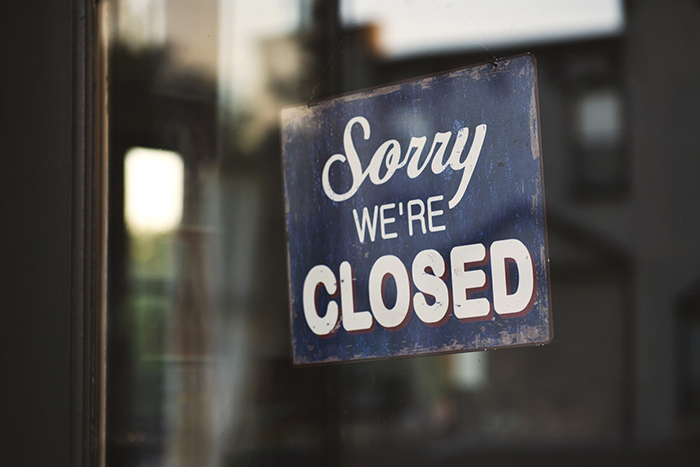Not paying enough attention to food cost
Keeping track and managing your food cost requires time and effort which is why it is often gets tossed aside.
However, it’s important to realize that food cost accounts for more than 1/3 of your restaurant expenses and can single-handedly ruin your bottom line. Set a budget based on historical sales numbers for the month and then monitor weekly or even daily.
Have weekly staff meetings. Designate people to certain tasks such as cutting fish or meat with minimal waste.
Track inventory of most priced items. Organize your inventory list in a dollar descending oder and track your most expensive inventory items such as seafood and meat. Narrow down when you see disproportionately higher costs on certain items and then eliminate what causes it.
Usually, it’s either waste or spoilage of product, mostly due to lack of experience of staff, low menu prices containing the particular inventory item or employee theft. However, you would only know what has disproportionately higher costs if you cost out your menu (later on that in my other articles).
Labor Cost is spelt Ca-li-for-nia
If you are a restaurant owner in California, you know how expensive labor is. Not only are you dealing with the highest minimum wages, turnovers, labor law compliance – you are frequently subject to the hormonal mood changes of cosseted teenagers. All of the aforementioned factors, undoubtedly lead to higher labor costs which along with food cost make up your prime cost. The prime cost should never exceed 60 – 65% of your sales. This means effective management is crucial.
Your managers are an extension of you which is why it is important to train them to reflect the values and morals you hold dear.
The right manager will be smart at hiring, sifting through and filtering out toxic staff and create a conducive and pleasant environment which would create a productive and customer-friendly team.
Make sure to reward and pay well your loyal employees, those who stuck around during covid or other tough times or volunteered to work when someone didn’t show up. If you are paying minimum wage month after month or worse, year after year – you may risk a higher turnover which means higher payroll costs due to a learning curve of newly hired personnel, loss of customer base due to inevitable order mistakes by new hires.
Accounting and record keeping are a mess
A common mistake by 90%+ of small restaurant owners is an assumption they can’t afford a bookkeeper which is why they would rather do it themselves.
While it may seem true on the surface, the history shows that most costly mistakes could have been prevented by hiring a bookkeeper. There are just too many aspects of accounting to cover in this paragraph but improper allocation of expenses may lead to wrong and often fatal decisions for the business.
The right bookkeeper will help you evaluate your sales and costs, track KPIs, forecast your cash flows, monitor and check for fraud, ensure that no bills are missed or skipped, licenses are updated and paid, your sales taxes are reported and paid correctly and on time, payroll is correct and compliant with applicable laws among other things.
A good bookkeeper will help automate most bookkeeping processes such as sales and AP to eliminate human error and cut their professional time processing invoices, bills thus lowering bookkeeping fee.
Most restaurant owners have no idea how to handle “third-party-delivery accounting” and most never usually write the cost of deliveries in their P&Ls thus understating the expenses. Third party deliveries may cost up to 30% of sales.
If your 3rd party delivery bookkeeping is done correctly – Doordash, UberEats deposits would be allocated to clearing accounts and zero out periodically when the costs of commission and marketing are recorded. If you didn’t fully understand the last sentence, it surely means you need to hire a restaurant bookkeeper to set up your books correctly.
While your bookkeeper can’t increase your sales or lower your prime costs, they can help you see when the numbers are not where they are supposed to be. Talk to your bookkeeper and set up workflow processes which will help to ensure the right, most efficient and timely record keeping processes. Don’t just pile up receipts and or file them in “that folder”.
If you bought $1,300 worth of steak in Costco, you bookkeeper will see a $1,300 charge in QBO; however, they will have no idea where to allocate the charge unless there is a communication process for sending receipts, e-filing or AP/receipt capture. If you need a bookkeeper who specializes in restaurant accounting to clean up, catch up your books, a quick health check of your books email me at [email protected]




